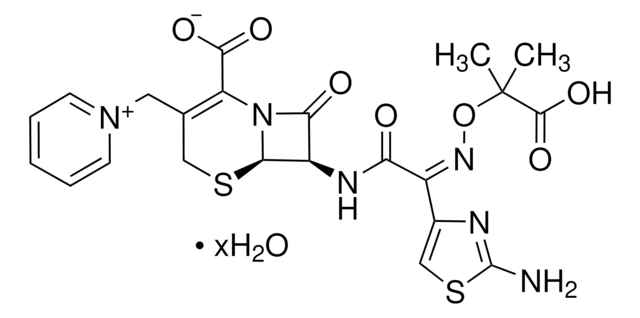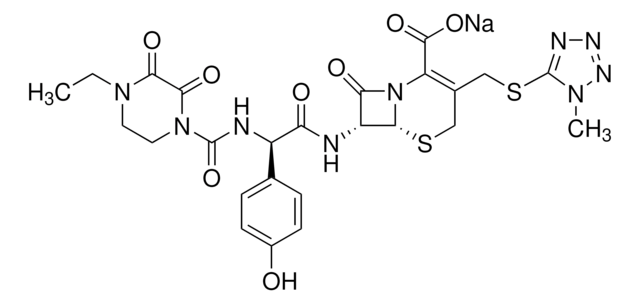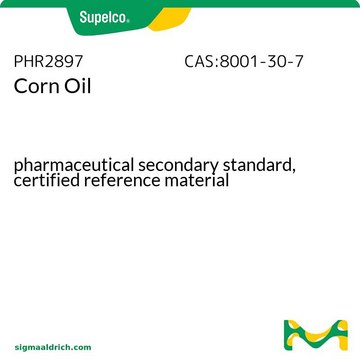C6048
Cefmetazole sodium salt
About This Item
Produits recommandés
Forme
powder
Niveau de qualité
Durée de conservation
limited shelf life, expiry date on the label
Solubilité
H2O: 50 mg/mL
Spectre d'activité de l'antibiotique
Gram-negative bacteria
Gram-positive bacteria
Mode d’action
cell wall synthesis | interferes
Température de stockage
2-8°C
Chaîne SMILES
[Na+].[H][C@]12SCC(CSc3nnnn3C)=C(N1C(=O)[C@]2(NC(=O)CSCC#N)OC)C([O-])=O
InChI
1S/C15H17N7O5S3.Na/c1-21-14(18-19-20-21)30-6-8-5-29-13-15(27-2,17-9(23)7-28-4-3-16)12(26)22(13)10(8)11(24)25;/h13H,4-7H2,1-2H3,(H,17,23)(H,24,25);/q;+1/p-1/t13-,15+;/m1./s1
Clé InChI
BITQGIOJQWZUPL-PBCQUBLHSA-M
Description générale
Application
Actions biochimiques/physiologiques
Conditionnement
Autres remarques
Mention d'avertissement
Danger
Mentions de danger
Conseils de prudence
Classification des risques
Eye Irrit. 2 - Resp. Sens. 1 - Skin Irrit. 2 - Skin Sens. 1 - STOT SE 3
Organes cibles
Respiratory system
Code de la classe de stockage
11 - Combustible Solids
Classe de danger pour l'eau (WGK)
WGK 2
Point d'éclair (°F)
Not applicable
Point d'éclair (°C)
Not applicable
Faites votre choix parmi les versions les plus récentes :
Certificats d'analyse (COA)
Vous ne trouvez pas la bonne version ?
Si vous avez besoin d'une version particulière, vous pouvez rechercher un certificat spécifique par le numéro de lot.
Déjà en possession de ce produit ?
Retrouvez la documentation relative aux produits que vous avez récemment achetés dans la Bibliothèque de documents.
Notre équipe de scientifiques dispose d'une expérience dans tous les secteurs de la recherche, notamment en sciences de la vie, science des matériaux, synthèse chimique, chromatographie, analyse et dans de nombreux autres domaines..
Contacter notre Service technique








